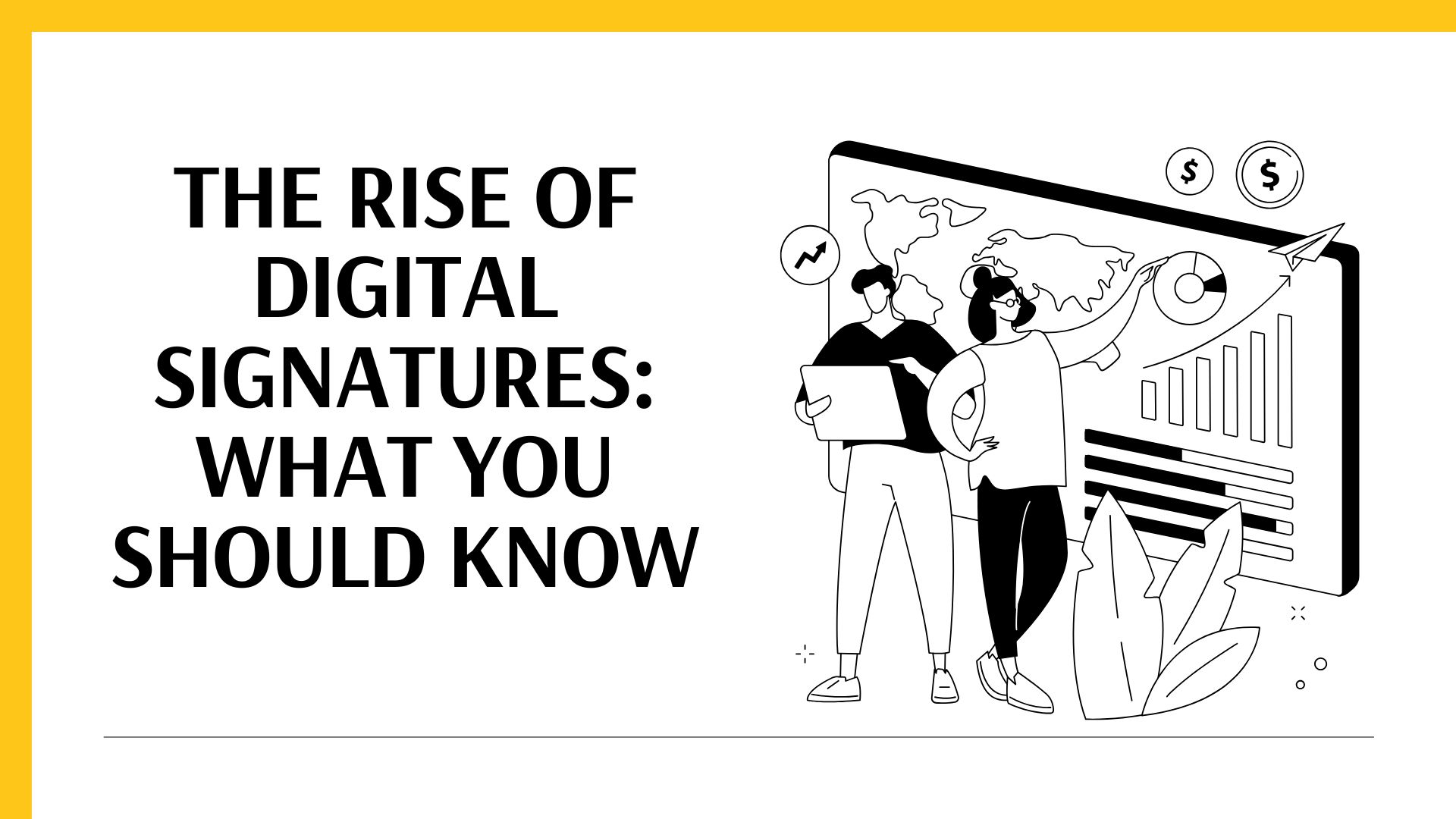Digital signatures have become an essential part of how we do business, communicate, and ensure security in our increasingly digital world. They’re more than just electronic versions of handwritten signatures; they provide a secure and reliable way to verify the identity of signers, protect the integrity of documents, and streamline workflows. Let’s take a look at what digital signatures are, why they matter, and how they’re changing the landscape of various industries.
What is a Digital Signature?
At its core, a digital signature is a mathematical method used to validate the authenticity and integrity of a digital message or document. Think of it as a digital seal that only the intended person can “stamp” on a file, proving that it comes from them and has not been altered. Digital signatures rely on encryption technology, which scrambles and unscrambles information using special digital “keys” that are unique to each user.
When someone digitally signs a document, a cryptographic “fingerprint” unique to the signer and the document is created. This fingerprint (or hash) is encrypted and attached to the document, forming the digital signature. When someone opens the document, they can use the public key to decrypt and verify this signature, ensuring the document has not been tampered with.
Why Digital Signatures Matter
Digital signatures offer several benefits that make them crucial in today’s digital world:
-
Security:
Digital signatures use complex encryption that protects against unauthorized changes. When a document is digitally signed, it’s nearly impossible to alter the content without invalidating the signature.
-
Authenticity:
With digital signatures, recipients can trust that the document is from the expected sender. This is especially important for sensitive information, like legal documents, financial records, and contracts.
-
Efficiency:
Digital signatures make it easy to sign documents from anywhere in the world, reducing the need for physical paperwork, couriers, or face-to-face meetings.
-
Environmental Impact:
By reducing the need for paper, printing, and physical storage, digital signatures also help reduce carbon footprints.
How Digital Signatures Work
Digital signatures operate through public key infrastructure (PKI), which is a combination of encryption technology and identity verification. Here’s a simplified look at the process:
-
Key Creation:
A user generates two keys – a private key (kept secret) and a public key (shared publicly).
-
Document Signing:
The user signs the document with their private key, creating a unique encrypted “hash” that can only be linked to them.
-
Verification:
When the recipient receives the document, they use the public key to verify the signature. If the document has been altered, the verification process will fail, indicating tampering.
This process ensures that the signature is unique to the user and the document, making it secure and verifiable.
Steps to Apply for a Digital Signature Online
-
Go to the DSC Website:
Visit https://edigitalsignature.org/.
-
Fill in Details:
Enter user type, DSC class, certificate type, validity, and contact details. Submit the form.
-
Token Option:
Choose whether you need a new token.
-
Make Payment:
Complete the payment online.
-
Get DSC:
After approval, receive your DSC on an encrypted pen drive via post.
Legal Status of Digital Signatures
Digital signatures are legally recognized in most parts of the world, though the specific laws vary by region. The Electronic Signatures in Global and National Commerce Act (E-SIGN) in the United States and the eIDAS Regulation in the European Union, for example, establish legal standards for digital signatures. These laws ensure that digital signatures are as legally binding as traditional signatures, giving businesses and individuals the confidence to use them for contracts, agreements, and more.
How Digital Signatures Are Used Across Industries
The benefits of digital signatures extend across many industries:
-
Legal:
Law firms use digital signatures to authenticate contracts, agreements, and court documents. This ensures quick, secure processing, especially in cases requiring timely approvals.
-
Finance:
Banks and financial institutions use digital signatures to validate customer documents, loan agreements, and investment forms. This reduces fraud risks and improves operational efficiency.
-
Healthcare:
Healthcare providers use digital signatures for medical records, patient consent forms, and insurance documents. This helps protect patient privacy and ensure data integrity.
-
Real Estate:
Real estate transactions, from buying property to signing leases, have benefited greatly from digital signatures. Buyers and sellers can complete paperwork remotely, speeding up the process.
-
Government:
Digital signatures have been critical in digital governance, allowing citizens to sign official documents, pay taxes, and access services online.
The Security Behind Digital Signatures
One of the most significant advantages of digital signatures is their security. Here are some of the ways digital signatures ensure document security:
-
Encryption:
Digital signatures use complex encryption, making it virtually impossible to forge a signature or alter a signed document.
-
Audit Trails:
Many digital signature platforms offer detailed audit trails, which record every step of the signing process. This helps to track exactly who signed what and when.
-
Authentication:
Some digital signature systems integrate with identity verification methods, such as biometrics, two-factor authentication, or even government ID checks, making it even more secure.
How Digital Signatures Differ from Electronic Signatures
It’s common to confuse digital signatures with electronic signatures, but there’s an important difference. An electronic signature can simply be an image of a person’s signature or a typed name on a document. While it does show intent to sign, it doesn’t necessarily offer the same level of security or authentication as a digital signature. Digital signatures use PKI-based encryption, which is much more secure and compliant with most legal standards.
The Future of Digital Signatures
The use of digital signatures is expected to grow significantly as more businesses embrace digital transformation. The rise of remote work, global transactions, and cybersecurity threats will likely accelerate the adoption of secure, verifiable digital signature solutions. Here are some trends to watch:
-
Blockchain Technology:
Blockchain has the potential to make digital signatures even more secure by creating an immutable record of signed transactions. This could further reduce risks associated with document tampering.
-
Biometric Signatures:
Some digital signature solutions are beginning to integrate biometrics (like fingerprint or facial recognition) to add another layer of verification.
-
Wider Legal Acceptance:
As digital signatures become more widely adopted, more countries and industries will establish clear standards and regulations, making digital signatures even more universal and trustworthy.
-
Integration with AI:
AI could enhance digital signatures by automating signature verification, detecting anomalies, and improving fraud detection capabilities.
Suggested Read – Class 3 Digital Signature Certificate For eTender
Conclusion
Digital signatures are much more than a simple convenience—they’re a secure, reliable, and legally recognized way to conduct business in the digital age. From enhancing security and compliance to reducing environmental impact, the benefits of digital signatures are substantial. As technology advances and more people recognize the advantages, digital signatures will likely become even more integral to daily business operations, fostering trust, security, and efficiency across industries.














